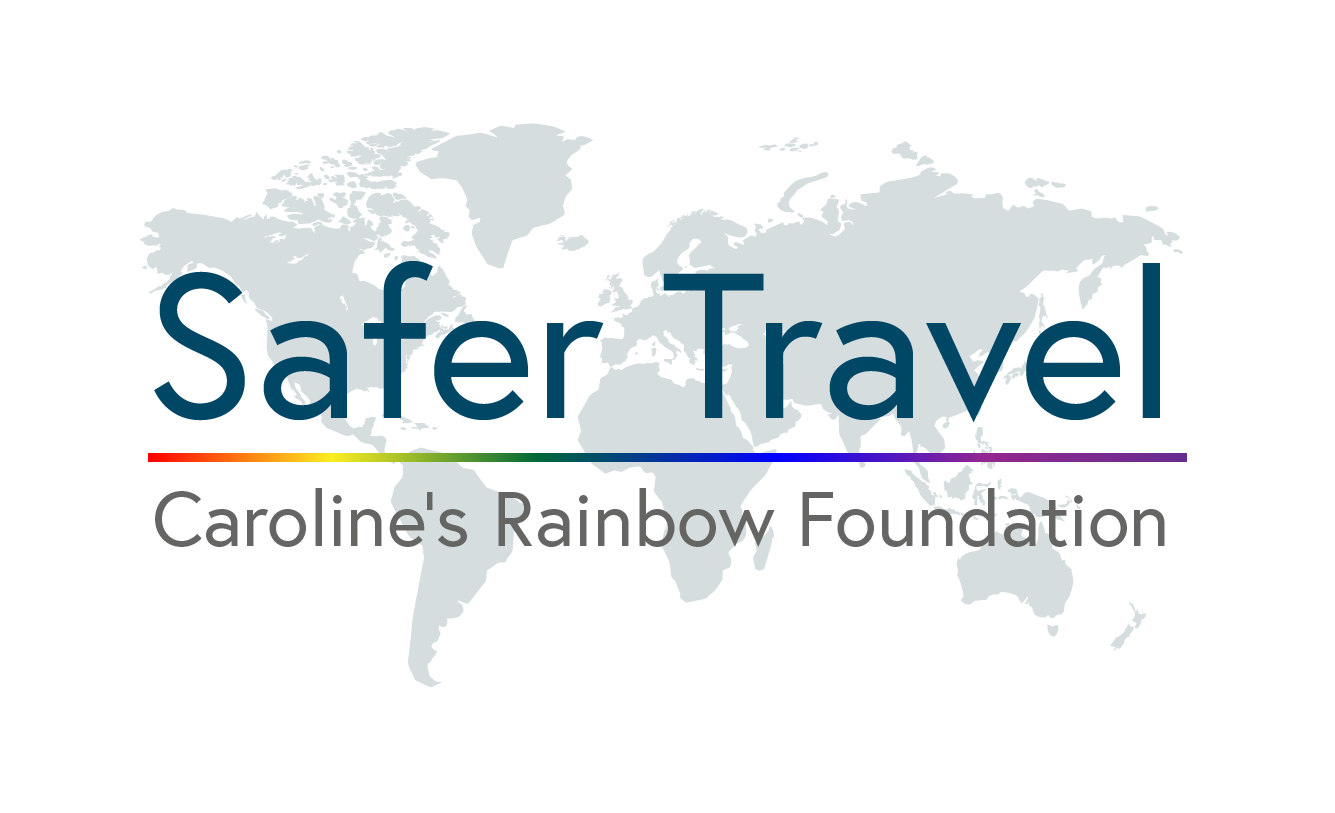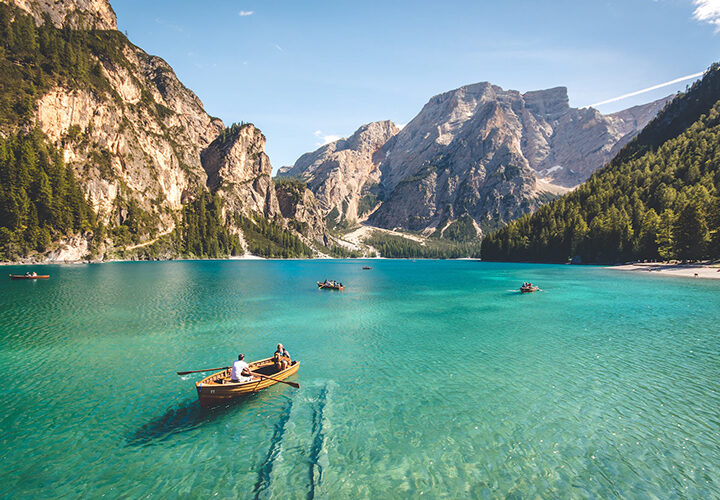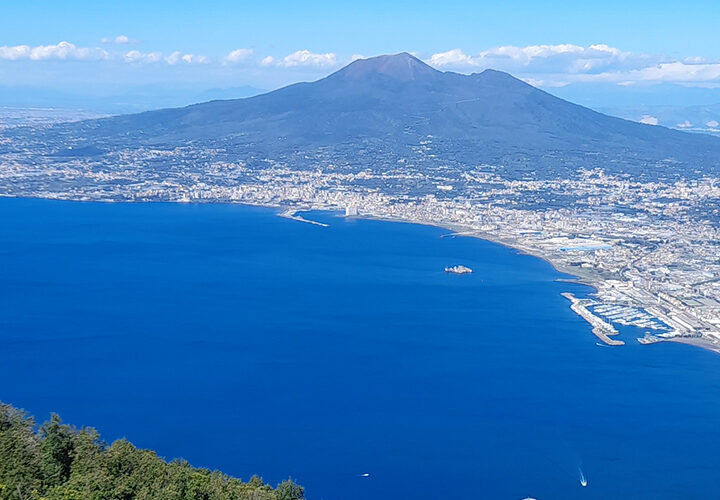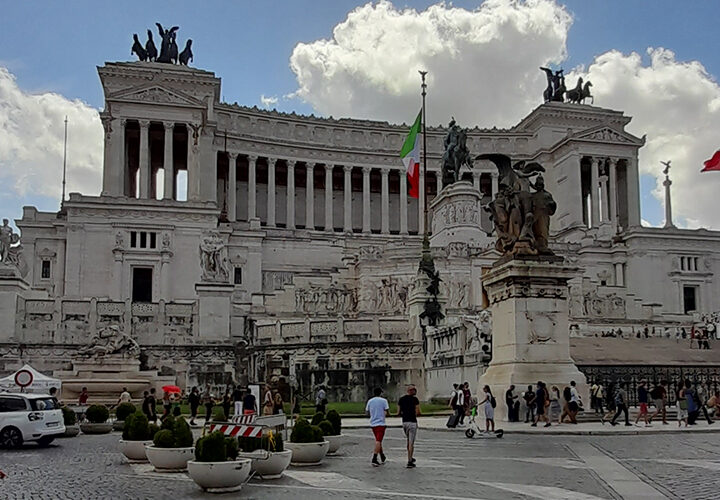A weekend break in Amsterdam
Amsterdam is the capital and biggest city of The Netherlands, and one of the most alluring tourist destinations in Europe. Around 20 million people flock to visit this city every year, and once you’ve had an experience of its quaint cafes, picturesque architecture and beautiful canals, it’s easy to understand why. But with it’s walkable, or cycle-able, city centre, Amsterdam is a very popular tourist destination for city breaks. This is how I experienced Amsterdam earlier this year; a four-day break in the Easter holidays, to explore what the city has to offer. City breaks, or long weekends, differ from normal holidays primarily by their length and breadth. They’re typically between two and five days, (as opposed to the usual seven to fourteen days we associate with a holiday) and usually focus on only one city or region, instead of exploring a whole country, and taking day trips to different regions. Some people may say this isn’t worth the money of the flights, but for somewhere nearby and brimming with culture like Amsterdam, I think it’s the perfect city for a short break. I will explore other things you can do around Amsterdam for a longer stay, but I’ll mostly be reflecting on why my weekend break here was so much fun.
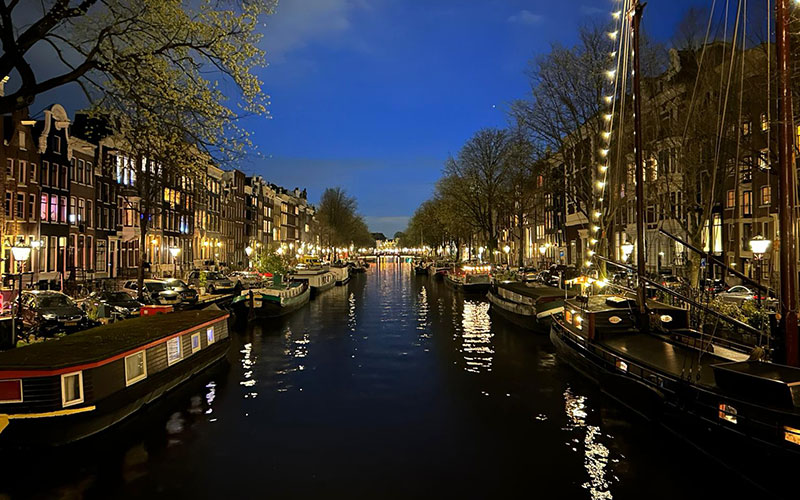
Getting there
Amsterdam has very good connections to the UK, with The Netherlands being just across the water. The Netherlands is a Schengen and EU country, meaning that they have freedom of movement. Although this doesn’t apply directly to UK citizens as it does to Schengen country’s citizens, it does mean travel between the UK and The Netherlands is visa free (for up to 90 days as a tourist) and easy. Most people will fly in, to Schiphol airport.
By plane: flights to Schiphol airport, Amsterdam’s main airport and 4th busiest airport in Europe, fly daily from most major UK airports including Edinburgh, Manchester, Heathrow and Luton.
By train: Amsterdam has great train connections, with train from The Hague, Rotterdam and various other locations in The Netherlands arriving daily. If you wish to get the train exclusively from the UK, you can get the Eurostar from London St Pancras to Brussels, Belgium, then change here for a train to Amsterdam.
By car: the easiest way to drive here is to drive to Newcastle, then get a ferry to Amsterdam. Although other UK locations offer ferries to The Netherlands, they’re often to Rotterdam which would require an extra train ride, so check before you book.
Travel tip: as of July 2023, cruise ships are to be banned from Amsterdam, so do not use this as a direct route. Although it is unlikely that this will affect car ferries, the Dutch government may, in the near future, make this decision. Therefore I’d recommend flying, if possible, especially just for a weekend trip.
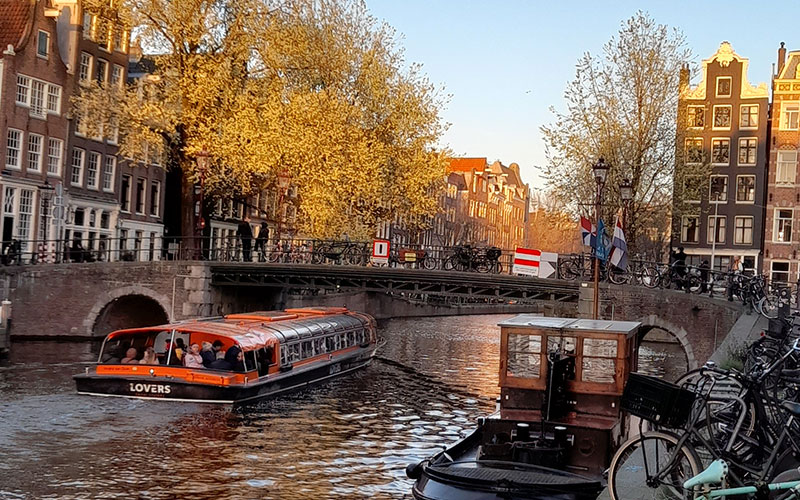
Why visit Amsterdam?
Amsterdam is Europe’s 6th most visited city, with over 20 million visitors in an average year. Although, like everywhere, this took a dive during Covid, I found visiting this year in the post-Covid era we find ourselves in, this was only picking up. Amsterdam is, undeniably, a beautiful city, but the reasons I, and 20 million other people, visited go far beyond this. Amsterdam is a warm, friendly and safe city that offers something entirely different to the rest of Europe. I visited Amsterdam for a short break, as my first visit to The Netherlands, therefore for me Amsterdam acted as a gateway into this country, which was one of the things I found so alluring about it. For a capital city, Amsterdam seems relaxed, and it doesn’t feel like you should be stressed about anything on your holiday. This is especially great if you’re here on a weekend break, as it means you can get around the city, and see everything there is to see, in the time you have without feeling stressed.
Amsterdam is famous for its beautiful canals and picturesque thin buildings. Some people, like me, love to walk around the city and take in all this beauty. So here’s my list of the top five most beautiful places to go:
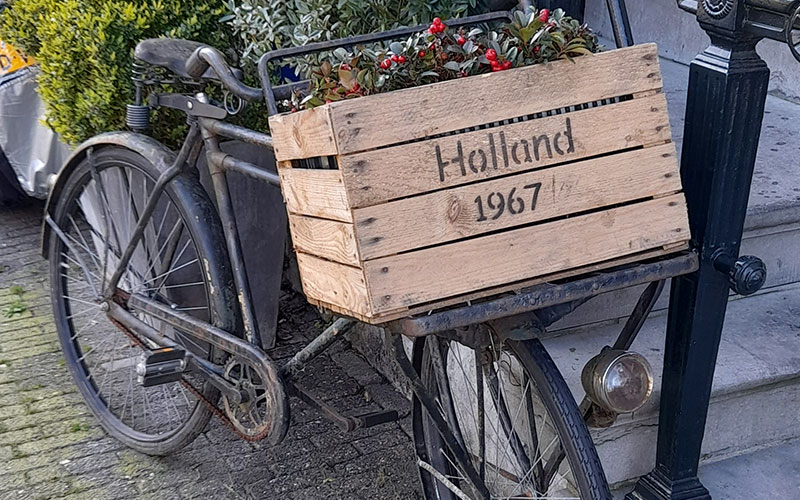

Just walking around and taking in the sights is always recommended during shorter stays. I find if you rush around too much trying to do everything, you just make yourself stressed and don’t get a feel for the city, so I advise taking it easy and having a walk (or cycle) around. That being said, Amsterdam is a city brimming with museums, galleries and attractions, so here’s my list of the top 10 attractions to see in Amsterdam:
My top ten attractions in Amsterdam:
- The Anne Frank House. The preserved house that Anne Frank, a Jewish girl and diarist hiding from the Nazis in the 1940s, and her family lived and hid in. Visitors can look around the house, and see the attached museum.
- The Van Gogh Museum. Containing many works of Van Gogh as well as other impressionist painters like Monet, Gauguin and Pissarro.
- The Rijksmuseum. Considered one of the most important museums in the world, this collection includes over 1 million items including the works of Rembrandt and Vermeer.
- Bodyworlds. A museum in Damrak that explores all things to do with the human body. It includes many preserved human bodies through a process called plastination. It explores the science of the human body, and how lifestyle factors affect it. Although it is family friendly, be warned some sections aren’t for the faint of heart!
- The Red-Light District. Perhaps Amsterdam’s most famous attraction, the red-light district is made up of two sections in the city centre. It is a hub of cafes, nightlife and adult entertainment. It is where the brothels and the majority of the coffeshops in Amsterdam are located, but is also home to lots of history. If you’re thinking of visiting the red-light District, please read the full travel guidance below in the section “Dutch Culture.”
- Canal Tour. These are great for getting to see most of the city at once, taking in the picturesque views and learning some interesting history. Our tour guide was informative and funny, and it’s a great way of seeing parts of the city you maybe otherwise wouldn’t.
- Vondelpark. Amsterdam’s main park, this large and scenic part of the city is perfect for leisurely walks or bike rides. There are also lovely cafés and music venues within as well.
- Rembrandt House. The preserved house and museum of the artist Rembrandt. *
- The Royal Palace. Located on Dam Square, this is the historic and operational home of the Dutch Royal Family. You can admire it from the outside in Dam Square, or you can pay to go inside and explore this historic building with its marble hall, grand council chamber and lavishly ornate royal apartments. *
- Eat at The Pancake Bakery. Pancakes, both sweet and savoury, are a huge part of Dutch culinary culture. Although there’s a wide selection of pancake houses all across the city for all budgets, I personally recommend The Pancake Bakery, located on the same street as the Anne Frank House. It’s considered to be the oldest pancake bakery in Amsterdam, and is housed in a beautiful old building dating back to 1627, when it was a warehouse for the Dutch East India Company.
Museums tip: keep in mind that for many of these attractions and museums, booking in advance is essential as they will very likely be booked out on the day. For the most popular ones, like the Van Gogh Museum, I recommend booking a few weeks in advance to avoid disappointment, as when we tried to book a week in advance it was booked out for the rest of the month. This applies for off-peak season, too.
Dutch Culture
At a glance:
Cannabis
- Is technically still illegal.
- Can be obtained in small doses from licensed cafes.
- These licensed cafes cannot and will not advertise they serve cannabis outside.
- You can have up to 5 grams on you for personal use in your home and not on the street.
- Can be confiscated, especially in areas close to the border.
Brothels
- Prostitution and brothels are legal, but regulated and brothels must be licensed.
- Sex workers have the same rights as other workers in The Netherlands.
- Illegal prostitution/ trafficking is illegal, and illegal to partake in. Always check for a license.
- The red-light district is a perfectly safe place to be, both during the day and at night (although caution is advised).
It’s worth noting, although many people visit The Netherlands for these reasons, if like me you have no interest in them, they are very subtle- even within the red-light district- and will not encroach on your holiday. If you don’t like these aspects of Amsterdam, don’t worry about them, they do not affect the overall feel of the city.
Being safe around Amsterdam
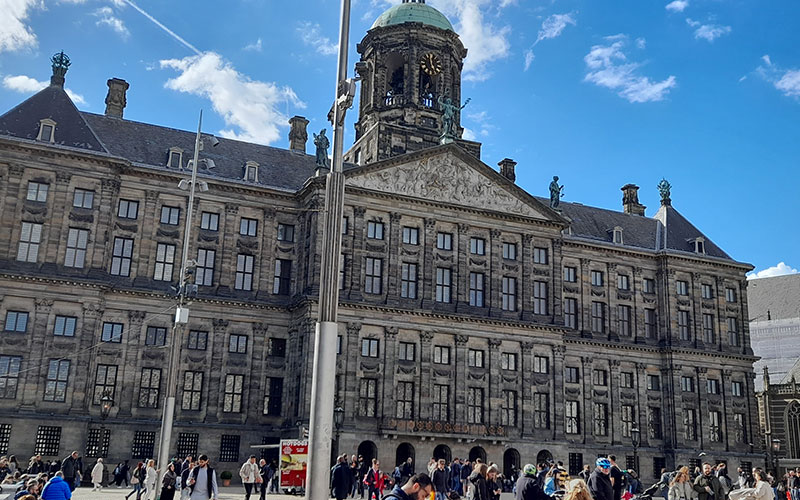
Beyond Amsterdam
Fun Amsterdam facts:
- The Dutch have a rich colonial history, once being one of the largest empires in the world, once controlling land on 6 of the 7 continents.
- It is, by many calculations, the 6th most visited city in Europe annually, and the 26th worldwide.
- There are more bikes than people in Amsterdam.
- Amsterdam has more canals than Venice.
- The oldest stock exchange in the world is located in Amsterdam.
One weekend- is that enough?
Amsterdam is, without a doubt, one of the most beautiful cities in Europe, and it’s also one of the most densely packed with things to do. For its size, it’s easy to walk, and the canal system means it’s less congested with cars, which makes everything seem so much more leisurely here. Weekend breaks aren’t for everyone; they can often seem rushed, and leave you wondering if you missed out on anything. But for me I found this was the perfect amount of time to explore the city, as Amsterdam’s compact nature means you can see and do most things- just remember to book in advance so you don’t miss out on seeing everything you want! And besides, Amsterdam is a beautiful and alluring city, so even if you don’t feel like you’ve seen everything in your short break you can, like me, just look forward to when you’ll plan your next trip- because once you’ve been once, you’re sure to keep coming back.
Written by Jeremy Hodgson
Check Gov.uk’s Travel Advice for the most up-to-date information on Amsterdam, before you travel. This includes checking the local laws and customs, as well as entry requirements. For tips on staying safe and enjoying a night out in Amsterdam, please visit the Travel Aware campaign page.
